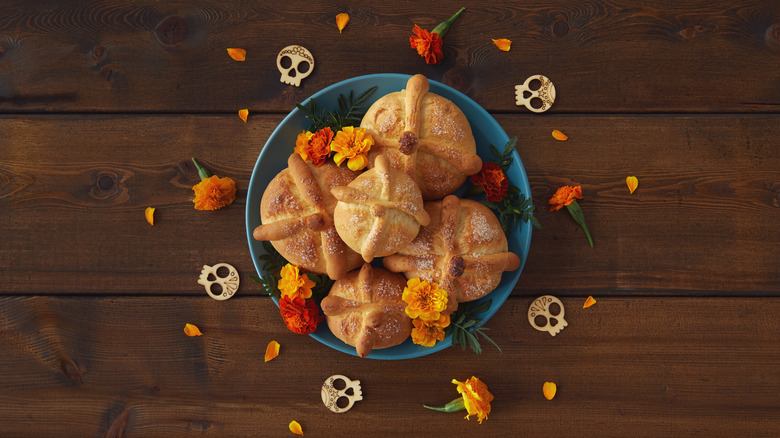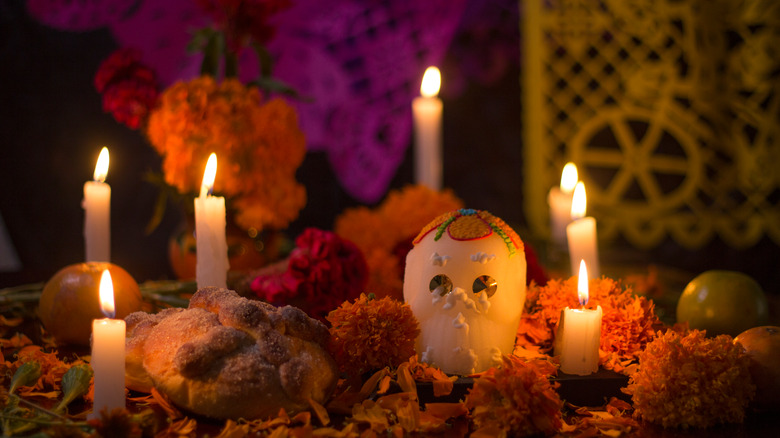Pan De Muerto: The Mexican Sweet Bread To Honor The Dead
Holidays wouldn't be the same without their staple foods. Thanksgiving is at least as synonymous with gratitude as it is with turkey and mashed potatoes, and maybe your grandma used to make a pumpkin pie every year on Christmas Eve. St. Patrick's Day without corned beef or Valentine's Day without chocolate simply wouldn't seem right. It's the reason why trick-or-treaters spend an entire chilly, autumnal night acquiring Halloween candy, although, before candy, Americans used to eat fruit and nuts on Halloween, per CNN. In modern Ireland, the birthplace of Samhain, folks eat a fortune-telling bread called Barmbrack on Halloween (via Food52). Still, the country with arguably the best fall holiday food is Mexico.
The Day of the Dead (aka Día de Los Muertos) is a traditional Mexican holiday celebrated from October 31 until November 2, per History. At midnight on October 31, the gates of heaven are believed to open so that spirits can return to earth and spend some time with their families until All Souls Day on November 2.
A great showcase of this celebration is depicted in Disney/Pixar's film Coco, where the protagonist is seen building altars and cleaning the house to welcome spirits. But people have been celebrating it for around 3,000 years. The Day of the Dead is a celebration of ancestry, culture, Mesoamerican religion, and family, and like so many other holidays, food plays a big role in the festivities — one food in particular. Introducing: Pan de Muerto, aka Bread of the Dead.
A sweet bread for a sweet tradition
Pan de Muerto is a soft, pillowy sweet bread infused with star anise and orange blossom water and coated in a layer of granulated sugar, per Delish. (Although King Arthur suggests using anise seeds, so whichever version you have on hand seems to work alright). It's an elaborate process with an unsurprisingly long handling time: Per Food & Wine, a single loaf takes six hours to make.
The loaf itself is usually decorated with a skull shape, or crossbones, which serve as a dual representation of the four directions of the Aztec calendar. Pan de Muerto can be made in other different shapes, as well. Carlos Tzel, a sous chef based in Playa del Carmen, Mexico, says sometimes the bread loaf is topped with smaller circular mounds meant to symbolize the bones of the deceased.
In addition to Pan de Muerto, other common foods for celebrating the holiday include sugar skulls, tamales, and the deceased ancestors' favorite foods. Pan de Muerto is left on home altars called "ofrendas" overnight as an offering to spirits in the classic Day of the Dead tradition. Then, the next morning, it is enjoyed by the family for breakfast with hot chocolate.

